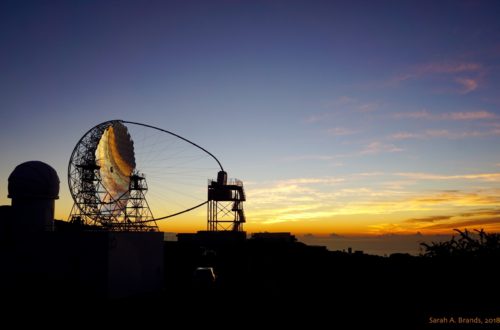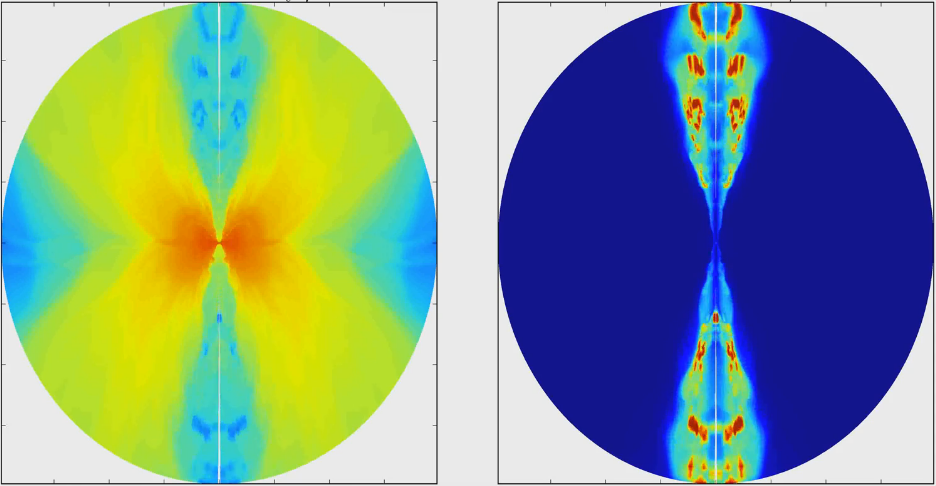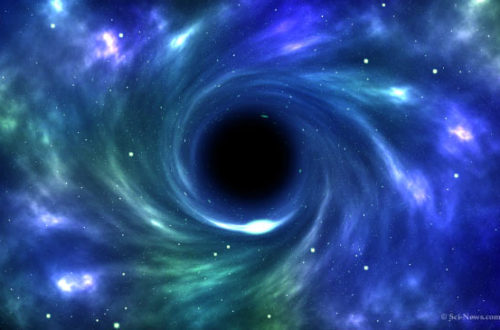Fast radio bursts are enigmatic transient sources that attracted many studies in the past 13 years. They are radio bursts that release a huge amount of energy within milliseconds time. For many years, they were only observed from very distant galaxies. Given the large distances, those extragalactic fast radio bursts remain mysterious events (find here a review by Emily Petroff).
On Apr 28, 2019, an extremely bright millisecond-duration radio burst was caught from a magnetar in our Miky Way! The radio bursts were detected by two radio telescopes — Canadian Hydrogen Intensity Mapping Experiment (CHIME) and the Survey for Transient Astronomical Radio Emission 2 (STARE2). They are powerful radio arrays to catch transient radio events in the Universe. The radio burst released 1.5 Mega-Jansky ms fluence at 1.4 GHz radio band. The isotropic-equivalent energy is 4000 times brighter than any Galactic radio burst previously observed on a similar timescale (check this paper). Subsequently, the radio burst was regarded as the first Galactic fast radio burst in many studies. It provides a unique opportunity for us to have a close look at fast radio bursts.

(an artist’s conception; Image: © NASA’s Goddard Space Flight Center/S. Wiessinger)
The magnetar emitting the fast radio burst is called SGR 1935+2154. It was found in an active state on Apr 27 by Swift and Fermi telescopes. Thanks to the astronomical alert systems, multi-wavelength telescopes started to point to the magnetar and monitor its activities. In the X-ray band, Insight-HXMT and Konus-Wind caught a double-peaked burst 8.6 seconds ahead of the radio burst. The time difference perfectly built the relationship between the X-ray and radio burst, giving no intrinsic time delay between them after correction of the dispersion measure dependence on the light wavelength (the light with a longer wavelength is expected to arrive later in the ionized interstellar medium).

The magnetar SGR 1935+2154 sits at the center of supernova remnant G57.2+0.8. A supernova explosion over 16000 years ago formed both the magnetar and remnant. Now the remnant is expanding at a velocity of less than 200 kilometers per second. The remnant is likely interacting with a molecular cloud — dense and cold gas made with molecules – and excite the 1720 MHz maser (check this arXiv paper). The cloud is at a distance of around 6.6 kpc (~21500 light-years). Given the association between the cloud and the supernova remnant, we suggest that the Galactic fast radio burst occurs ~6.6 kpc away from us. At this distance, the Galactic fast radio burst is around 80 times weaker than the weakest extragalactic ones observed to date. This means that this burst expands our knowledge of the group of fast radio bursts. On the other hand, we need to ask what forms the brighter fast radio bursts? Are they also made from the magnetars or do they have totally different origins? We believe that there will be many more cool findings for fast radio bursts and magnetars in the future.
Because the magnetar and the supernova remnant were formed together, many properties are shared between them. This interesting complex system demonstrates that the studies of multiple astrophysical phenomena — fast radio bursts, magnetars, and supernova remnants — could be linked together.




